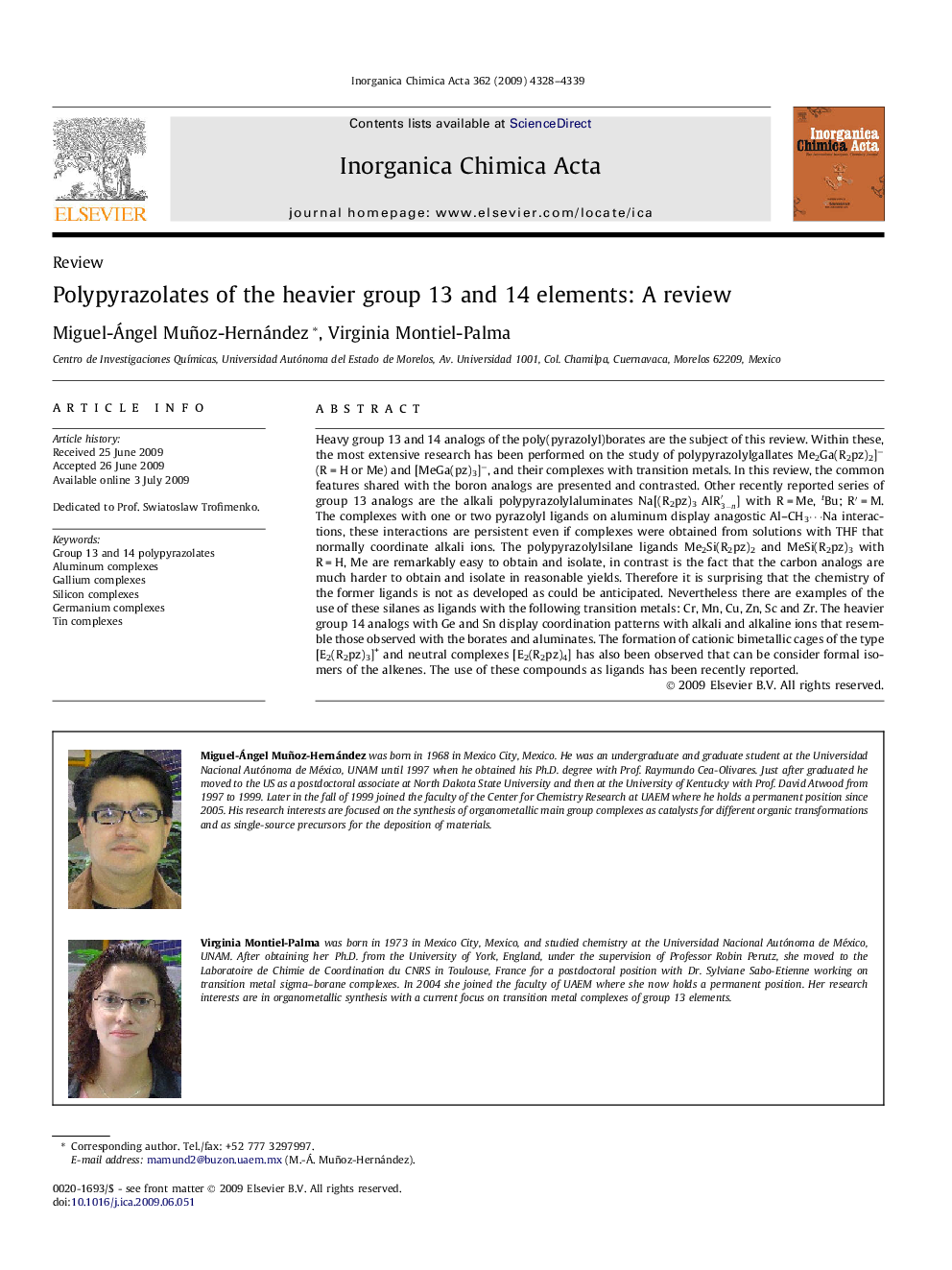| Article ID | Journal | Published Year | Pages | File Type |
|---|---|---|---|---|
| 1309545 | Inorganica Chimica Acta | 2009 | 12 Pages |
Heavy group 13 and 14 analogs of the poly(pyrazolyl)borates are the subject of this review. Within these, the most extensive research has been performed on the study of polypyrazolylgallates Me2Ga(R2pz)2]− (R = H or Me) and [MeGa(pz)3]−, and their complexes with transition metals. In this review, the common features shared with the boron analogs are presented and contrasted. Other recently reported series of group 13 analogs are the alkali polypyrazolylaluminates Na[(R2pz)3AlR3-n′] with R = Me, tBu; R′ = M. The complexes with one or two pyrazolyl ligands on aluminum display anagostic Al–CH3⋯Na interactions, these interactions are persistent even if complexes were obtained from solutions with THF that normally coordinate alkali ions. The polypyrazolylsilane ligands Me2Si(R2pz)2 and MeSi(R2pz)3 with R = H, Me are remarkably easy to obtain and isolate, in contrast is the fact that the carbon analogs are much harder to obtain and isolate in reasonable yields. Therefore it is surprising that the chemistry of the former ligands is not as developed as could be anticipated. Nevertheless there are examples of the use of these silanes as ligands with the following transition metals: Cr, Mn, Cu, Zn, Sc and Zr. The heavier group 14 analogs with Ge and Sn display coordination patterns with alkali and alkaline ions that resemble those observed with the borates and aluminates. The formation of cationic bimetallic cages of the type [E2(R2pz)3]+ and neutral complexes [E2(R2pz)4] has also been observed that can be consider formal isomers of the alkenes. The use of these compounds as ligands has been recently reported.
Graphical abstractAnalogs of the polypyrazolylborate ligand system can be envisioned by replacing the pyrazolyl rings by other substituents or the boron atom for other main group element. The latter variation is the subject of this review and is focused on the polypyrazolates of the heavier 13 and 14 elements.Figure optionsDownload full-size imageDownload as PowerPoint slide
